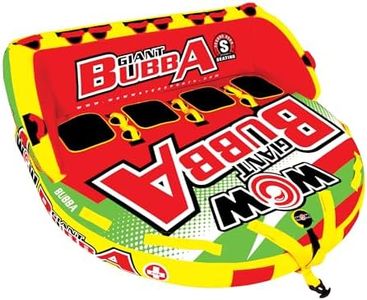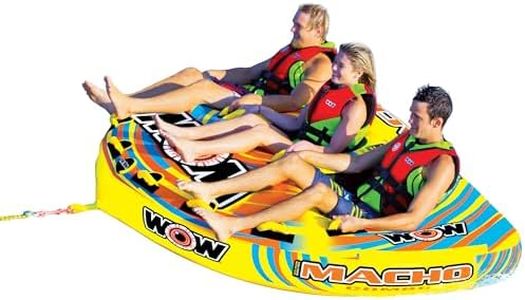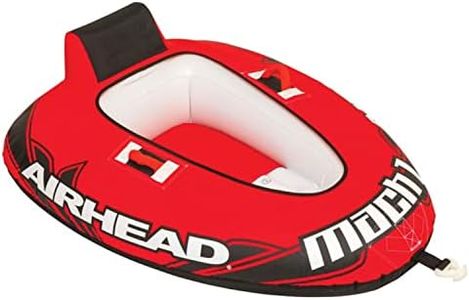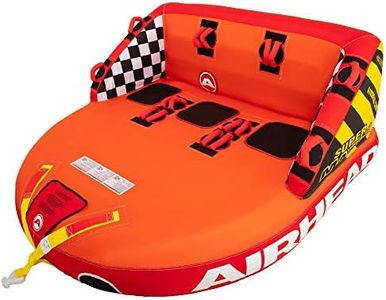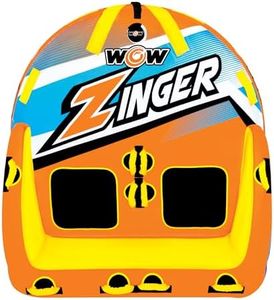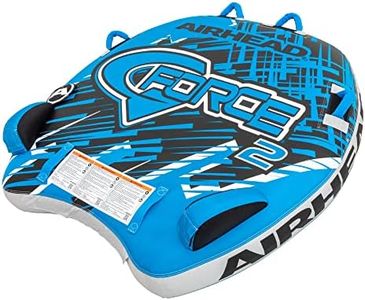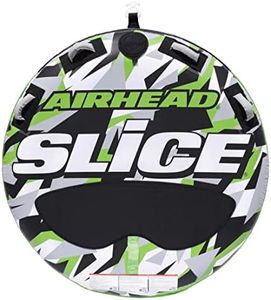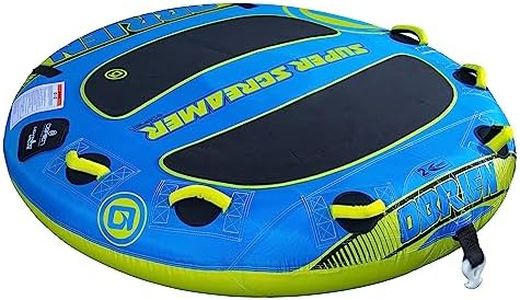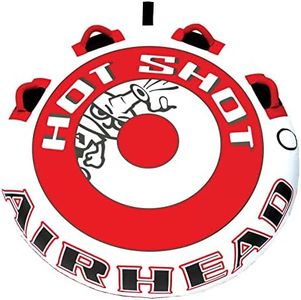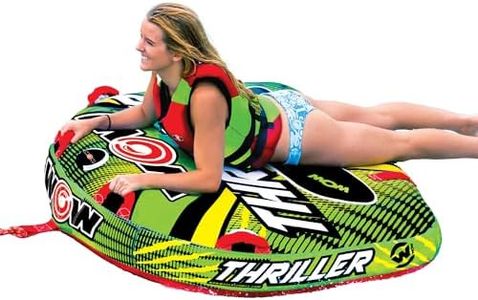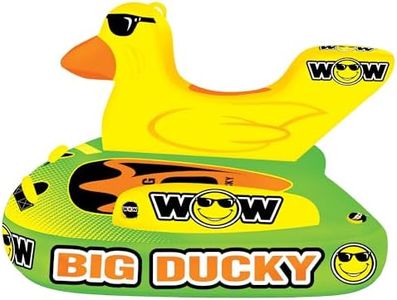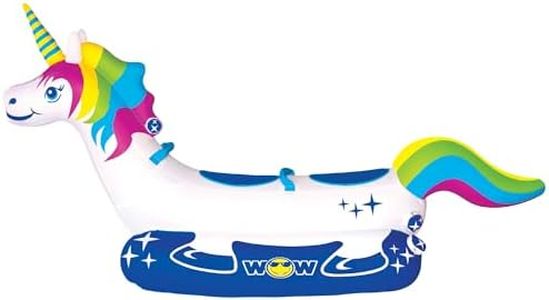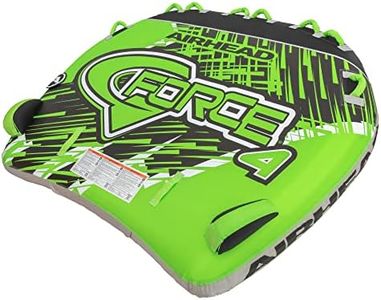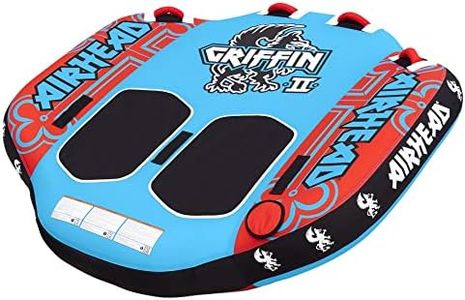We Use CookiesWe use cookies to enhance the security, performance,
functionality and for analytical and promotional activities. By continuing to browse this site you
are agreeing to our privacy policy
10 Best Towable Tube For Jet Ski
From leading brands and best sellers available on the web.Buying Guide for the Best Towable Tube For Jet Ski
Choosing a towable tube for your jet ski can dramatically increase your fun on the water, but it’s important to pick one that matches both your needs and your jet ski's capabilities. Think about who will be using it—kids, adults, or a mix—how many riders there will be, and what kind of experience you want, whether it’s a relaxed ride or something more thrilling. Understanding the main features of towable tubes helps you pick a model that's safe, comfortable, and enjoyable for everyone.Rider CapacityRider capacity refers to how many people the tube is designed to hold at once. This is one of the most important specs because it relates directly to both safety and fun. Tubes generally come in sizes meant for 1, 2, 3, or even more riders. Single-rider tubes are often more maneuverable and built for speed or tricks, while multi-rider tubes are made for groups or families who want to ride together. If you usually ride with friends or family, go for a larger capacity. Remember, never overload a tube; always stick to the recommended number of riders for safety.
Tube Shape and StyleThe shape and style of the tube affect both the ride experience and how stable or thrilling the ride will be. Popular tube shapes include round (classic donut), deck (flat and wide), cockpit (with seats or sides), and specialty designs (like banana-style or winged tubes). Deck tubes are good for high-speed action and sliding, cockpits are good for small kids or those who want stability, and round tubes are versatile for almost anyone. Consider who will be riding: more adventurous riders may like deck or trick tubes, while younger kids or cautious riders benefit from cockpit styles.
Material and DurabilityMaterial quality determines how long your tube will last and how well it can handle rough play. Most towable tubes are made from heavy-duty PVC bladders covered in nylon or other tough outer fabrics. The thickness of the material, often given in denier ratings, gives a hint about durability—a higher number is usually tougher. If you plan to use your tube often or in rough waters, pick one with thicker, well-stitched covers and heavy-duty handles. Occasional users can get by with lighter materials, but frequent riders should prioritize durability.
Handles and Comfort FeaturesHandles are what riders hold on to during the ride, so their number, placement, and grip comfort matter a lot. Tubes typically have neoprene (soft and non-abrasive) handles for comfort and often include padding or anti-chafe features. The more active the ride, the more handles you'll need for safety and flexibility. Also, padded tops or backrests add comfort for longer rides. Consider who’ll be using the tube; smaller kids and those new to tubing will appreciate extra comfort and well-placed handles, while thrill-seekers may want more grip points for tricks.
Valve Type and Inflation/DeflationThe type of valve affects how easy it is to inflate and deflate your tube. Modern tubes often use speed valves or Boston valves that allow for quick air movement, making set-up and storage simple. With a good valve, you’ll save time on the shore and get on the water faster. If you dislike fussing with pumps or want to make breakdowns fast and easy, look for tubes with wide, one-way valves that prevent air loss during inflation.
Safety FeaturesSafety features include reinforced tow points, secure stitching, and stable designs that help prevent flipping or tipping. Also, well-placed handles and bright colors boost visibility and safety in busy waterways. If your group includes children or less-experienced riders, prioritize stability-oriented designs and extra safety features so everyone can enjoy tubing with peace of mind.

